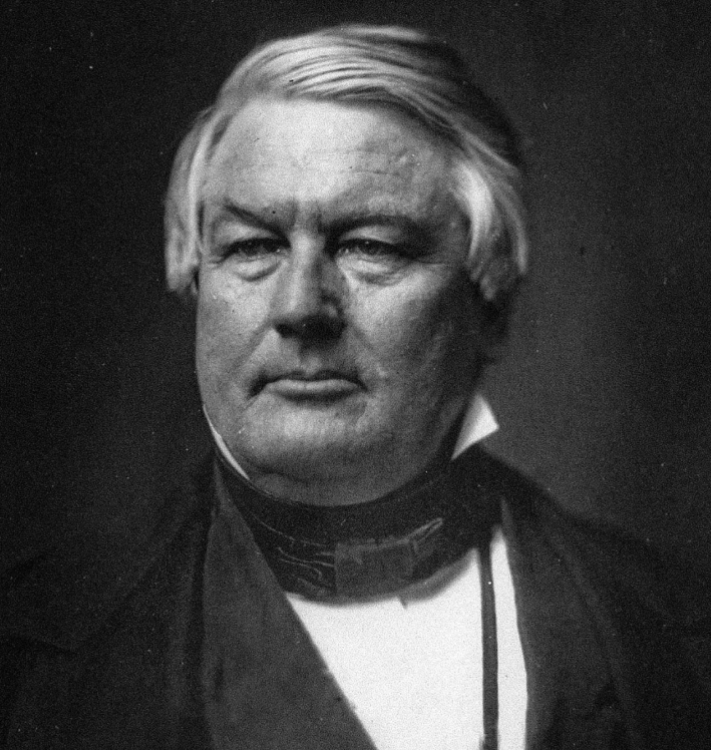President Millard Fillmore served as the 13th president of the United States from 1850-1853. He was elected as the 12th vice president in 1848, serving under President Zachary Taylor. When President Taylor died in 1850, Fillmore succeeded to the presidency.
President Fillmore is most well known for his role in passing the Compromise of 1850, which briefly paused the battle over the expansion of slavery.
Early Life
As a child, Millard Fillmore endured severe poverty. He was one of eight children, and his parents were tenant farmers in Finger Lakes, New York. At age 14, Fillmore became apprenticed in the trade of cloth dressing. Fillmore discovered he was unhappy with the trade; and, despite lacking formal education, he became an avid reader.
Fillmore’s legal education began in 1819, when he served as a law clerk to a local judge. He was admitted to the New York bar in 1823. Shortly thereafter he established his own law firm in East Aurora, and later moving to Buffalo, NY.
Political Life
Fillmore was elected to the New York State Assembly and served three terms, from 1829-1831. He was politically affiliated with the Anti-Masonic party and won a seat in the U.S. House of Representatives in 1832. Realizing that the Anti-Masonic party was too narrow to win national support, he joined the newly formed Whig party, which supported the Second National Bank of the United States, and supported the expansion of internal navigation systems, like building roads, bridges, and canals. He serves as a congressman from 1833-1835, and 1837-1843. In 1848, Fillmore became New York’s first comptroller and created a plan that helped stabilized the currency.
Presidency
General Zachary Taylor was nominated at the 1848 Whig National Convention. Taylor was from Louisiana and held slaves, which put many Whig voters at unease. Though Taylor did not pick his running mate, as was customary then, people assumed that Fillmore was opposed to slavery because he was from a free state. Fillmore did consider slavery to be an evil, but believed the federal government had no authority over it. Taylor was narrowly elected by the popular vote but won a significant majority in the electoral college.
As vice president, Fillmore presided over many contentious debates in the Senate regarding the expansion of slavery. The territories of California and New Mexico were added during this time.
When President Taylor suddenly died in July of 1850, Fillmore succeeded to the presidency. Fillmore signed the Compromise of 1850 into law, which admitted California as a free state. In exchange, the South was guaranteed that no federal restrictions would be placed on slavery in New Mexico or the territory of Utah. This legislation helped delay the Civil War. However, accompanying the Compromise of 1850 was the Fugitive Slave Act, which required Northerners to return runaway slaves under penalty of law. This angered many Northerners, and Fillmore became unpopular with the northern Whig party. Fillmore did not seek reelection in 1852 and returned to Buffalo. Fillmore became active in the philanthropy, donating to many Buffalo causes. He died in 1874, at the age of 74.






